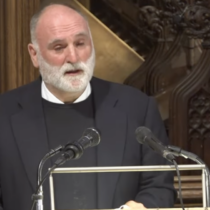
We can either look forward to an extra hour of sunlight or complain about losing an hour of sleep. Daylight Saving Time (DST) starts on Sunday morning, March 10, at 2 a.m. as clocks move forward by one hour. This practice, observed in many countries, including the United States, aims to better utilize daylight during spring and summer.
The changeover back to Standard Time (ST) occurs on the first Sunday in November at 2 a.m. Some people remember which way to move their clocks using the phrase, “spring forward, fall back.”
Montgomery County Fire and Rescue Service (MCFRS) urge residents to check their smoke alarms and change them if they are ten years or older.
Almost Time for a Change…..Change Your Clock & ‘Spring forward’ into safety by having 10-year, long-life sealed battery-operated smoke alarm when you change your clocks on 3/10 It’s not too late to ‘check the date’ Smoke Alarms manufactured 2014 or earlier – must be changed pic.twitter.com/iEHJWWFWWm
— Pete Piringer (@mcfrsPIO) March 8, 2024
DST’s origins trace back to the early 20th century, often credited to Benjamin Franklin. However, widespread adoption occurred during World War I to conserve energy. Supporters argue DST reduces energy use, extends evening daylight for outdoor activities, and can improve mood and productivity.
Critics claim DST disrupts sleep and the body’s internal clock, leading to fatigue and reduced productivity. Some studies suggest an increase in traffic accidents post-time change. The effectiveness of DST in saving energy is also debated, with studies showing minimal or no savings.
One issue is the inconsistency of DST observance across regions and states. Not all US states observe DST, and those that do may start and end it on different dates, causing confusion.
Reflecting on DST’s history, benefits, and drawbacks, whether viewed as a spring signal or a disruption, it remains a fixture in our lives for the foreseeable future.

